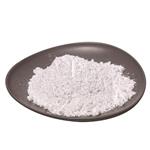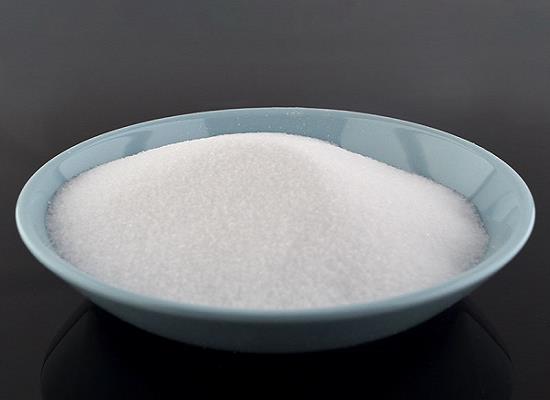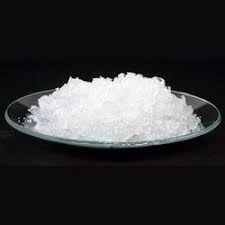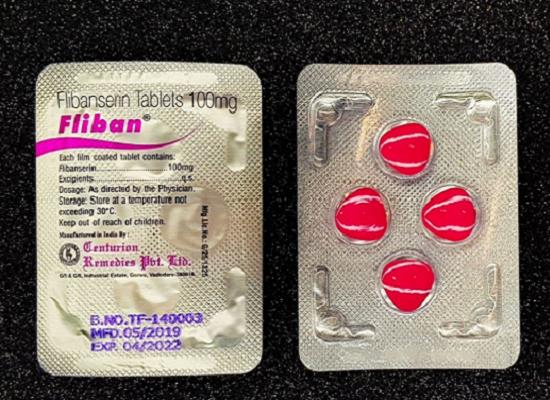Sodium fluoride: mechanism of action and clinical applications
General Description
Sodium fluoride is a bone remodeling agent that promotes bone mineralization and collagen cross-linking. It activates osteoblasts to enhance bone formation. Sodium fluoride has shown potential in treating osteoporosis by increasing vertebral bone density, but further research is needed. It may also benefit otosclerosis patients by preventing progression and hearing loss. In dental practice, sodium fluoride varnish is used to prevent cavities, promote remineralization, and treat tooth hypersensitivity with minimal side effects. It is safe for children and practical for dental clinics.
Figure 1. Sodium fluoride
Mechanism of action
Sodium fluoride is a fluoride compound that is considered a bone remodeling agent, and its mode of action can be explained as follows. Fluoride ions react with the phosphate groups on the surface of hydroxyapatite, the main mineral component of bones, promoting bone mineralization. This reaction reduces the surface energy, making bone mineralization more favorable. Additionally, fluoride ions can facilitate collagen cross-linking, increasing the hardness and strength of the bone. Fluoride also promotes bone formation by activating osteoblasts, a type of cell crucial in the process of bone formation. Fluoride stimulates the differentiation and proliferation of osteoblasts, thus enhancing bone formation. Moreover, fluoride increases the number of osteoblasts, thereby accelerating the bone formation process. 1
Clinical applications
Osteoporosis
Sodium fluoride has shown some application in the treatment of osteoporosis. One study demonstrated that intermittent therapy with sodium fluoride can lead to increased vertebral bone density, improved bone shape, and a reduction in vertebral fractures, although it does not appear to have an effect on hip fractures. This study also revealed that fluoride can significantly increase the formation of trabecular bone, but the texture seems to be more fragile, resulting in an increase in non-vertebral fractures. Therefore, while fluoride can increase bone mineral content, it also confirms that it does not provide protection against hip fractures. It is important to note that the use of sodium fluoride in osteoporosis treatment still requires further research and clinical trials. The potential benefits and drawbacks of using lower doses or intermittent therapy are actively being investigated. These studies aim to provide more conclusive evidence regarding the therapeutic efficacy of sodium fluoride in managing osteoporosis and preventing fractures. 2
Otosclerosis
Multiple clinical studies have shown that the treatment of otosclerosis with sodium fluoride, a condition characterized by abnormal bone resorption and formation in the oval window of the ear, may have benefits in preventing its progression and related hearing loss. Research has found that sodium fluoride can reduce enzyme levels in the ear lymphatic system of otosclerosis patients and inhibit the activity of pancreatic proteases. In addition, decreased strontium uptake near the oval window after sodium fluoride treatment suggests a halt in the progression of otosclerosis. Studies have also reported that otosclerosis cases treated with sodium fluoride show gradual mineralization and stabilization of the temporal bone spongy tissue. Some studies have shown that otosclerosis patients treated with sodium fluoride have less deterioration in their hearing compared to those who did not receive treatment. Treatment with sodium fluoride combined with calcium and vitamin D has also significantly reduced hearing loss in patients. Retrospective evaluations of patients with progressive hearing loss have found that sodium fluoride and calcium treatment can halt or slow down hearing loss in some cases. A double-blind placebo-controlled trial found that patients receiving sodium fluoride treatment had a lower incidence of worsening hearing compared to the control group. These clinical studies suggest that sodium fluoride treatment may have a positive impact on the progression of otosclerosis and help protect the affected individual's hearing. 3
Dental practice
Sodium fluoride, commonly found in fluoride varnish, has numerous applications in dental practice. This varnish is specifically designed to enhance the interaction between fluoride and the tooth surface, thereby increasing tooth resistance to cavities. The primary ingredient in fluoride varnish is typically 5% sodium fluoride, which boasts a high fluoride concentration of 22,600 ppm. In dental practice, sodium fluoride varnish serves several purposes. It helps prevent cavity formation, can halt the progression of early enamel and dentin caries by facilitating remineralization, and treats tooth hypersensitivity. Additionally, it can be used as a provisional luting agent, either alone or in combination with other agents, for cementing provisional crowns. Fluoride varnish has gained popularity in dentistry due to its quick and easy application. It rapidly adheres to teeth, minimizing the likelihood of gagging or swallowing. Moreover, adverse effects or complications related to its use are rare. Research indicates that fluoride varnish is safe, even for young children, with minimal risk of dental fluorosis. Its simple application process makes it highly suitable and practical for dental clinics and outreach dental services, particularly when treating young children and individuals with special needs. 4
Reference
1. Galus K. Mechanism of action of sodium fluoride in patients with osteoporosis. Pol Arch Med Wewn, 1984, 72(3):91-95.
2. Pak CY, Zerwekh JE, Antich PP, Bell NH, Singer FR. Slow-release sodium fluoride in osteoporosis. J Bone Miner Res, 996, (5):561-564.
3. Cruise AS, Singh A, Quiney RE. Sodium fluoride in otosclerosis treatment: review. J Laryngol Otol,2010, 4(6):583-586.
4. Chu CH, Lo E. Uses of sodium fluoride varnish in dental practice. Ann R Australas Coll Dent Surg, 2008, 19:58-61.
);You may like
Related articles And Qustion
Lastest Price from Sodium fluoride manufacturers

US $1.10/g2024-04-17
- CAS:
- 7681-49-4
- Min. Order:
- 1g
- Purity:
- 99.0% min
- Supply Ability:
- 100 tons min

US $0.00-0.00/kg2023-12-11
- CAS:
- 7681-49-4
- Min. Order:
- 1kg
- Purity:
- 0.99
- Supply Ability:
- 100tons





